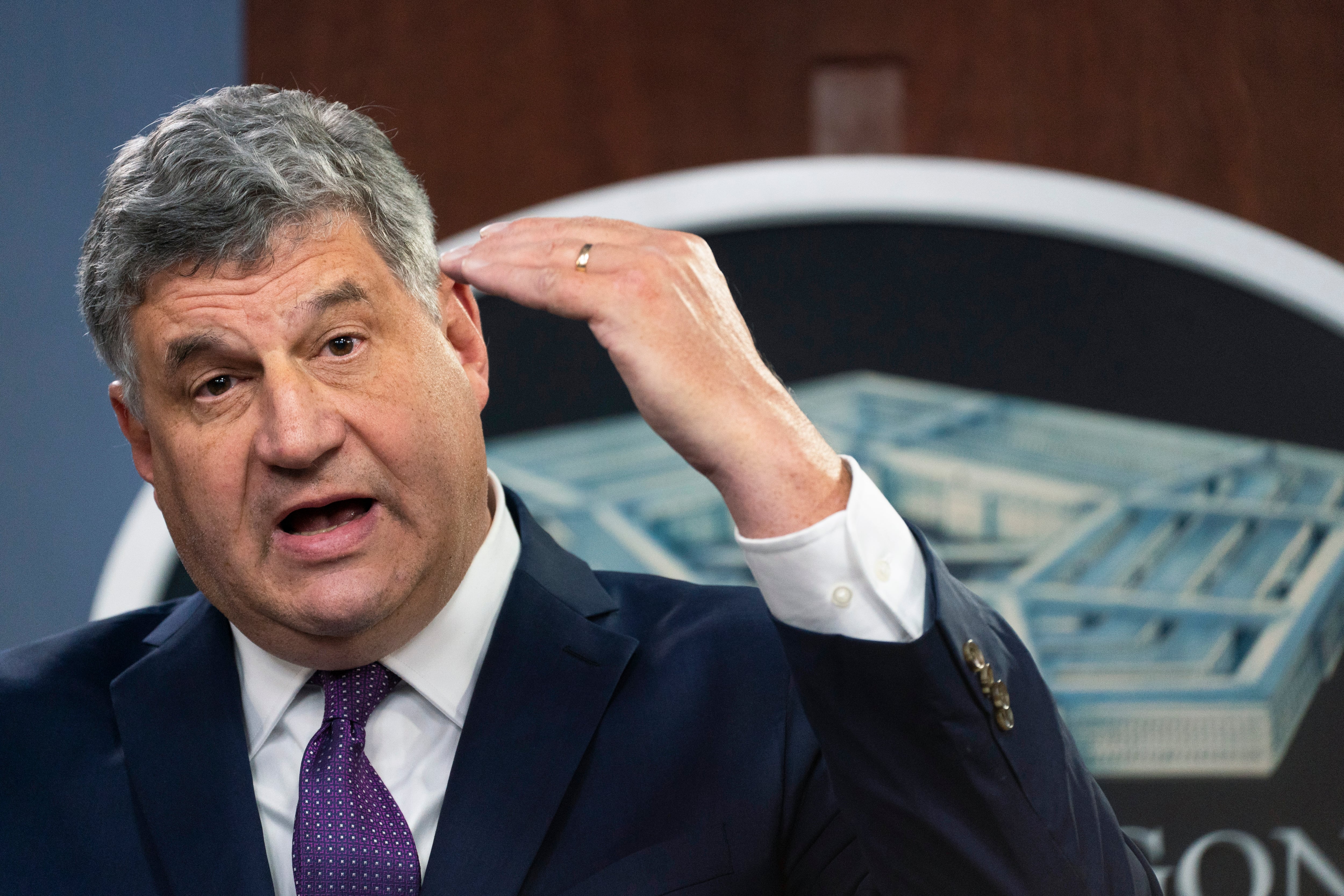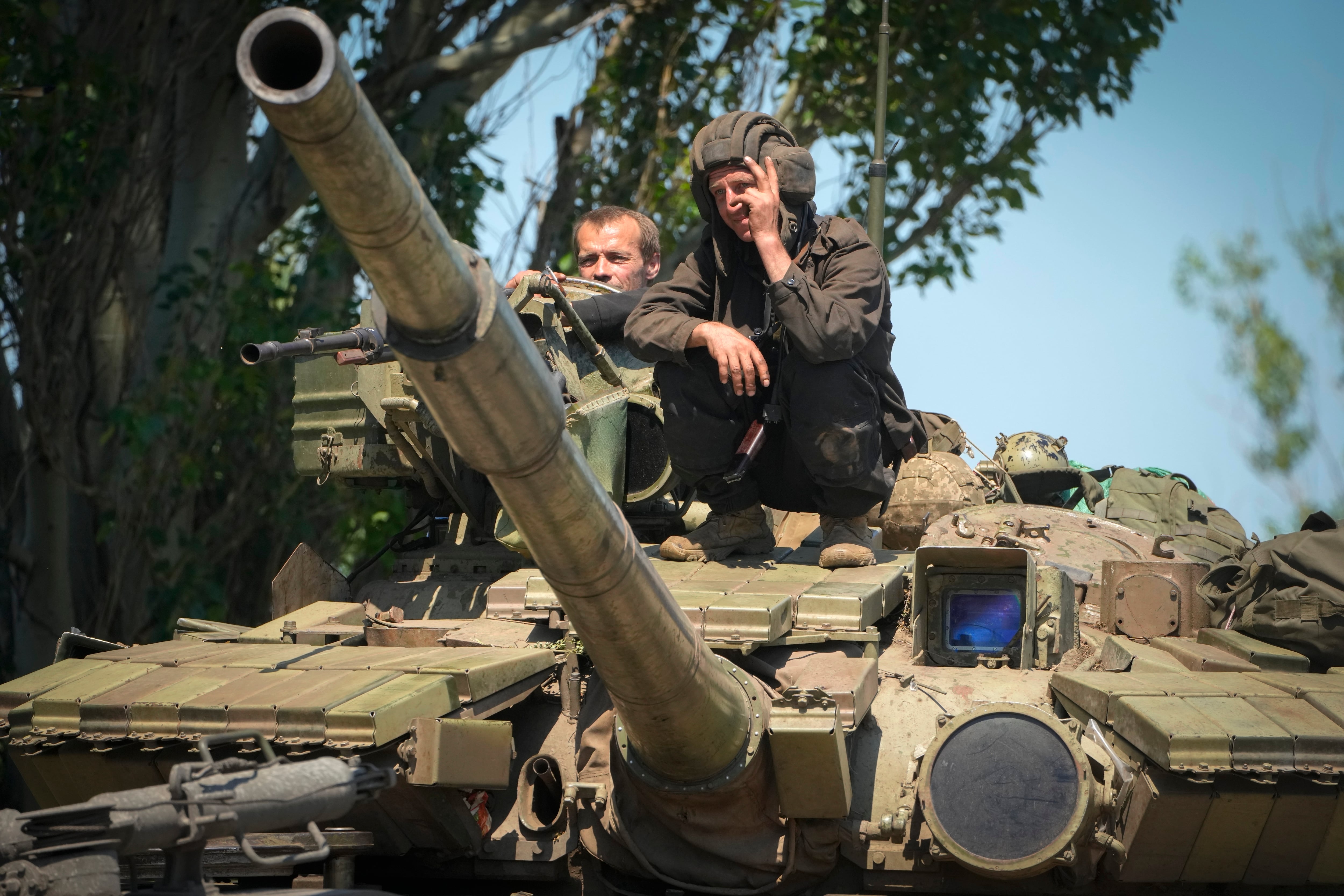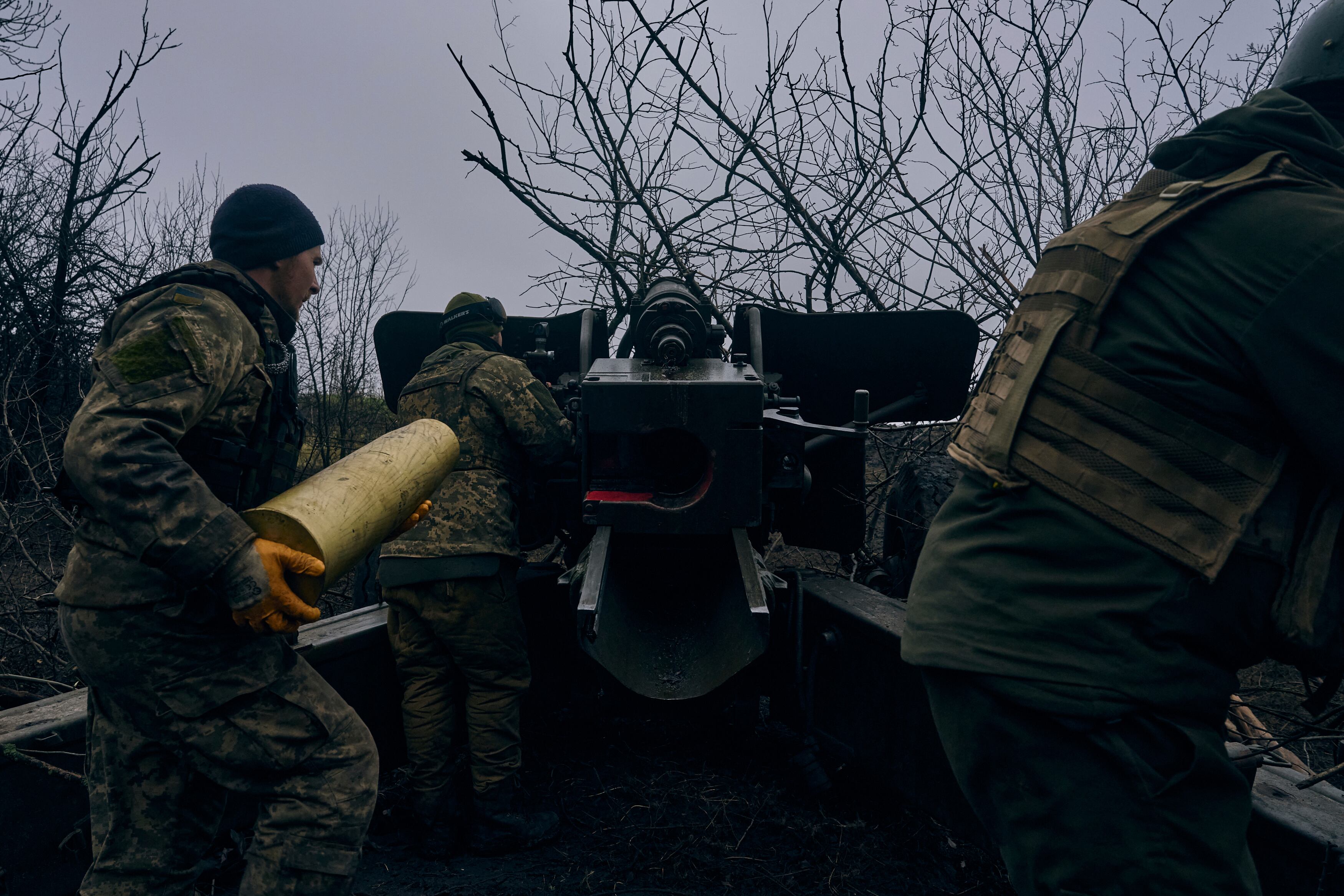HALIFAX, Nova Scotia ― Top defense officials in Europe say arms shortages among Ukraine’s Western allies are forcing difficult conversations about how to balance support for Ukraine with concerns Russia may target them next.
NATO members that have sent billions of dollars worth of weapons and equipment are discussing what stockpile levels they need to meet their obligations under the mutual defense treaty. Decisions facing them now could have consequences for their their own security and for Ukraine, in its fight to repel Russia’s nine-month-old invasion.
“When you are continuing to give away ammunition to Ukraine and you have to evaluate and assess the risk you take for your own readiness, you will have to take into account the threat,” the chairman of NATO’s military committee, Adm. Rob Bauer, said at the Halifax International Security Forum this weekend.
The strain on stockpiles is “across the board,” and particularly sharp for ammunition, he said. In the years before some countries donated to Ukraine, they maintained stockpiles at half capacity or less because they saw little risk or couldn’t afford more, and took a “just-in-time, just-enough,” approach to the defense industry.
“So the urgency now is seen and understood, I think in most of the nations,” Bauer said.
While Russia’s battlefield losses of soldiers, tanks and aircraft have made it less of a threat, Ukraine’s allies have to make complicated calculations about the ability and pace at which Russia can reconstitute its forces, Bauer said.
“The Russians have the same problems we have in terms of their stocks,” Bauer said.
Speaking to the forum via videoconference, President Volodymyr Zelenskyy warned against giving Russia a breather right now. Amid splits among Ukraine’s supporters over whether Ukraine should enter peace talks, Zelenksy rejected the idea of a short truce with Russia.
“The cessation of war as such doesn’t guarantee peace. Russia is now looking for a short truce, a respite to regain strength. Some may call it the end of war, but such a pause will only make things worse,” Zelenskyy said.
RELATED

The chief of Canada’s defense staff, Gen. Wayne Eyre, said that balancing Ukraine’s needs for lethal and non-lethal aid and what Canada’s military needs “is something that keeps me awake at night.”
“It’s a constant calculation as to where we can give and what we need to keep for our force generation, what we need to keep for future contingencies, and what industry can produce,” Eyre said at the Halifax forum.
Mindful of Canada’s ammunition levels after Ottawa donated M777 Howitzers and more than 25,000 artillery rounds earlier this year, Eyre said he visited General Dynamics Ordnance and Tactical Systems earlier this month to see what’s possible to boost production for 155mm ammunition.
“It’s not easy when you’re dealing with production lines that need significant retooling to get the various [equipment] that we need,” Eyre said. “It’s not easy when you have very complicated supply chains, especially for the component parts of the munitions that are required.”
For countries whose militaries have seen repeated cutbacks since the end of the Cold War, a sharp U-turn is underway. Seismic changes are afoot in Sweden, whose NATO application this year sparked fears of Russian retaliation.
“In my armed forces, we have for 30 years worked in a situation with reductions and downsizing, and plenty of time but no money,” the Swedish military’s supreme commander, Gen. Micael Bydén, said in an interview. “Now ambitions are there, the budget is racing. Ambitions and requirements are high; time is limited.”
One challenge, Bydén said, is that nearly every Western country is looking to the defense industry to ramp up to meet their defense needs simultaneously.
“If you end up too far down in the row, you will not get what you need, you will not get deliveries,” Bydén said. “We’re in a close dialogue with the defense industry, where the needs are greater than the capacity to step up ― if we continue the way we have done.”
The Pentagon is discussing with industry how to both surge new weapons production and coordinate among allies. In the meantime, U.S. Defense Secretary Lloyd Austin pressed allies at a NATO meeting in Brussels last month to “dig deep and provide additional capability.”
It’s an acute challenge for some of NATO’s smallest members, like the Netherlands, which even before its donation of more than $800 million’s worth of aid to Ukraine, was straining to meet its NATO obligations. Gen. Onno Eichelsheim, chief of defense of the Netherlands, said Dutch stocks were “not that high” when the Netherlands opted to send Ukraine 155mm howitzer ammunition and air defense missiles.
“We started with stocks that were not completely filled, that were not completely ready, did not have all the materiel to support what we needed for NATO,” Eichelsheim said. “It means that I immediately have to get stocks filled up by getting contracts with industry, which we started, luckily, a year ago.”
The Dutch government and other European allies have been having discussions with industry about their long-term procurement plans to incentivize production increases ― and how to prioritize deliveries based on which country needs a weapon most. One aim is to build Europe’s defense industry and not depend too much on the U.S.
“We have to coordinate ― specifically within the European continent ― better, because we have to fulfill a certain strategic autonomy in Europe,” Eichelsheim said. “You cannot only rely on the U.S. or on other partners if the need is that high. Because the U.S. will not be able to ramp up completely for us, which is what we thought in the past. That’s not the truth.”
RELATED

The gray zone between defense firms being forward-leaning and governments actually spending money has increasingly become part of the post-invasion conversation.
At Halifax, Bauer criticized defense firms, saying that after NATO members increased military budgets in response to Russia’s 2014 invasion of Ukraine, industry didn’t expand their production lines to match and charged more.
“As a result of demand going up and production capacity lagging behind the demand, the prices went up. As a result, we started to pay more for the same, which was not the reason why we were raising these defense budgets,” Bauer said. “This had nothing to do with Russia and Ukraine. This had to do with our own system, our own societies.”
Beyond increasing orders, Bauer said, Western allies ought to find ways to finance the defense industry, strengthen supply chains and also engage military suppliers in a “values” discussion about their role in safeguarding the rules-based international order.
Eric Fanning, the chief executive for the U.S.-based Aerospace Industries Association, said that while the European and American defense industrial bases can differ, companies usually bear risks in response to “clear signals” from their military customers.
“These companies have shareholders. They can’t build excess capacity or stocks of things in anticipation of something,” Fanning said. “The department has to send a clear signal about what it wants it, and industry will respond.”
Fanning said that industry’s ability to surge munitions production hinges on companies getting contracts, which he said the Pentagon been slow to let.
“This isn’t pencils,” Fanning said. “Even legacy munitions like Javelins and Stingers are complex and have very elaborate supply chains that feed into them. All of that takes time to line up and get moving again, and it’s very expensive to do if the customers aren’t buying.”
Joe Gould was the senior Pentagon reporter for Defense News, covering the intersection of national security policy, politics and the defense industry. He had previously served as Congress reporter.




